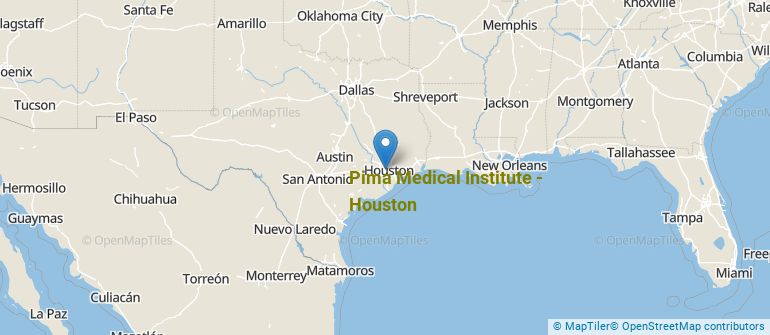 by our College Data Analytics Team
by our College Data Analytics TeamExplore the best ranked schools for the programs you are most interested in.
PMI Houston was not ranked in College Factual's 2025 Best Overall Colleges report. This could be for a number of reasons, including lack of data.
See all of the rankings for Pima Medical Institute - Houston.
Since Pima Medical Institute - Houston has an open admissions policy, being accepted to the school isn't that hard. However, a full basic things - such as a high school diploma or equivalent - may be required. Also, go over your application to make sure it is complete before you submit it.
The student to faculty ratio is often used as a measure to gauge how much access students will have to their professors - the lower the number, the better. At Pima Medical Institute - Houston, this rate is 21 to 1, which is high when compared to the national average of 15 to 1.
Another measure that is often used to estimate how much access students will have to their professors is how many faculty members are full-time. The idea here is that part-time faculty tend to spend less time on campus, so they may not be as available to students as full-timers.
The full-time faculty percentage at Pima Medical Institute - Houston is 48%. This is comparable to the national average of 47%.
The freshmen retention rate tells us what percentage of first-year, full-time students choose to continue on to their sophomore year at a particular school. The rate at Pima Medical Institute - Houston is 64%, which is about average when compared to the national rate of 68%.
During the 2017-2018 academic year, there were 876 full-time undergraduates at PMI Houston.
| $0-30 K | $30K-48K | $48-75 | $75-110K | $110K + |
|---|---|---|---|---|
| $24,472 | $26,479 | $27,539 | $28,488 | $28,488 |
The net price is calculated by adding tuition, room, board and other costs and subtracting financial aid.Note that the net price is typically less than the published for a school. For more information on the sticker price of PMI Houston, see our tuition and fees and room and board pages.
It's not uncommon for college students to take out loans to pay for school. In fact, almost 66% of students nationwide depend at least partially on loans. At PMI Houston, approximately 67% of students took out student loans averaging $8,596 a year. That adds up to $34,384 over four years for those students.
Get more details about paying for Pima Medical Institute - Houston.

See which majors at Pima Medical Institute - Houston make the most money.
Get more details about the location of Pima Medical Institute - Houston.

Contact details for PMI Houston are given below.
| Contact Details | |
|---|---|
| Address: | 11125 Equity Drive, Suite 100, Houston, TX 77041 |
| Phone: | 713-778-0778 |
| Website: | https://pmi.edu/ |
| Most Popular Majors | Bachelor’s Degrees | Average Salary of Graduates |
|---|---|---|
| Allied Health & Medical Assisting Services | 238 | NA |
| Veterinary/Animal Health Technologies/Technicians | 104 | NA |
| Dental Support Services | 100 | NA |
| Allied Health Professions | 93 | NA |
| Clinical/Medical Laboratory Science | 38 | NA |
| Practical Nursing & Nursing Assistants | 35 | NA |
| Health & Medical Administrative Services | 24 | NA |
Online learning is becoming popular at even the oldest colleges and universities in the United States. Not only are online classes great for returning adults with busy schedules, they are also frequented by a growing number of traditional students.
In 2022-2023, 395 students took at least one online class at Pima Medical Institute - Houston. This is an increase from the 33 students who took online classes the previous year.
| Year | Took at Least One Online Class | Took All Classes Online |
|---|---|---|
| 2022-2023 | 395 | 0 |
| 2021-2022 | 33 | 0 |
| 2020-2021 | 5 | 0 |
| 2018-2019 | 7 | 0 |
Learn more about online learning at Pima Medical Institute - Houston.
Footnotes
*The racial-ethnic minorities count is calculated by taking the total number of students and subtracting white students, international students, and students whose race/ethnicity was unknown. This number is then divided by the total number of students at the school to obtain the racial-ethnic minorities percentage.
References
More about our data sources and methodologies.